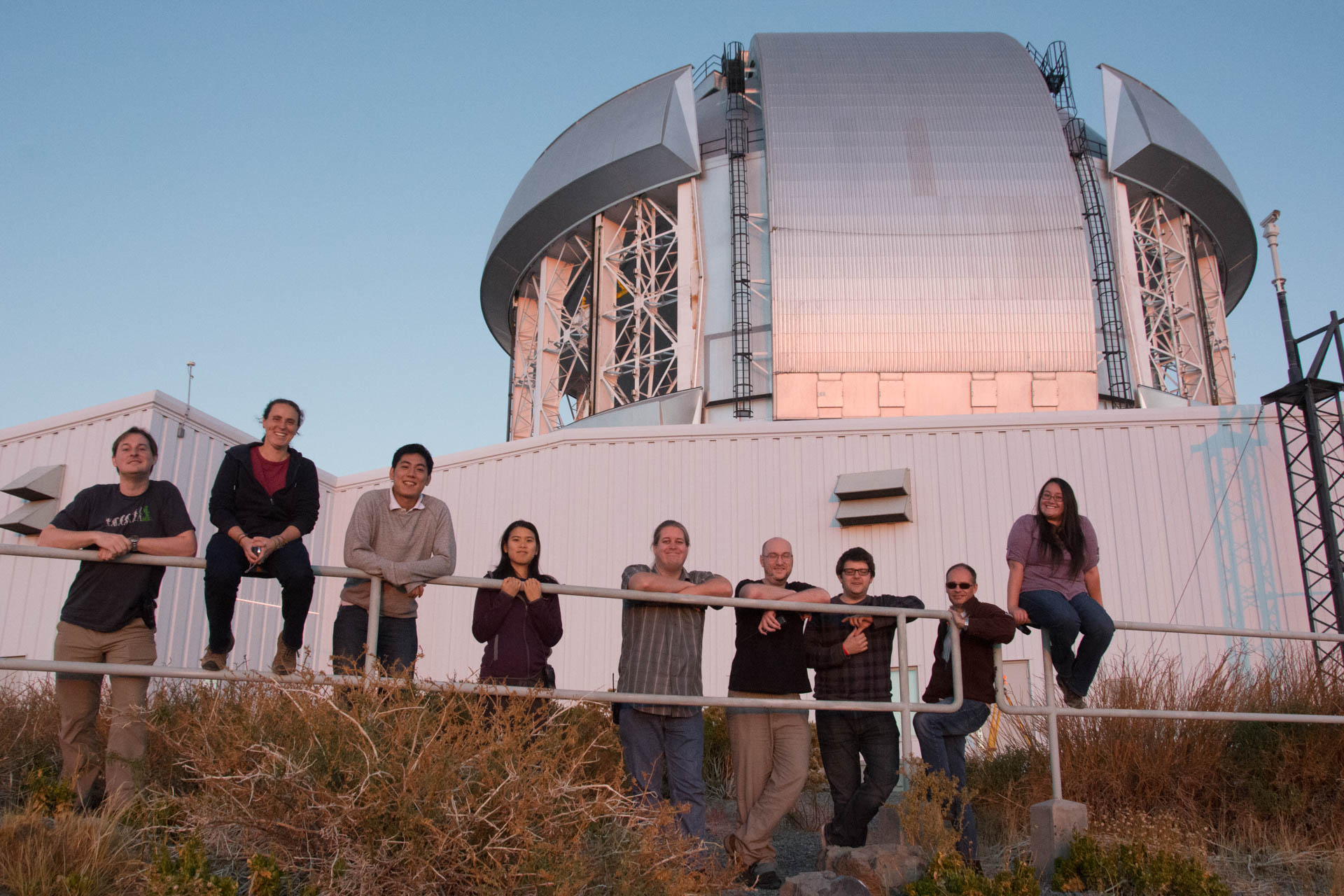Research
Over a thousand astonishingly diverse extrasolar planets (exoplanets) have been discovered in the last two decades, indicating that the planets in our solar system are not unique. These exoplanets and planetary systems have an enormous range of properties. For example, there is a group of high-temperature giant planets, named “hot Jupiters”, orbiting very close to their host stars. While Jupiter takes more than ten years to orbit around the Sun, it only takes a couple days for a typical hot Jupiter to complete its orbit. In addition to hot Jupiters, there are also solar system analogs such as HR 8799. This multiple-planet system has four giant planets distributed like a scaled-up version of our outer solar system. The enormous range of exoplanets with unique characteristics demands understanding of how these planets form and evolve. While the formation mechanism for small planets is well-accepted, the formation mechanism for giant planets is still under debate. Outstanding questions include: Do giant planets form through core accretion like the mechanism for forming small planets or through a collapsing phase more similar to the star formation process? Also, where is the birthplace of giant planets and how do they migrate as they evolve? By studying resolved images of debris disks at multiple wavelengths (i.e. the images below), I hope to understand the giant planet formation, evolution, and their demographics.

I am a National Science Foundation Graduate Research Fellow working with Prof. Michael Fitzgerald at UCLA. My research focuses on characterizing and modeling debris disks. Debris disks are composed of dust which originated from planetesimals orbiting stars, analogous to the asteroid belt and Kuiper belt in our solar system. By resolving a debris disk, we can characterize the spatial distribution and properties of dust grains and infer the dynamical history of the system. The above images show the resolved debris disk around the ~15 Myr star HD 131835 at different wavelengths. I am a member of the Gemini Exoplanet Imager Survey Team. The Gemini Exoplanet Imager is one of the first high-contrast instruments equipped with the extreme adaptive optics specially designed for direct imaging and spectroscopy of exoplanets and debris disks.
In the past, I had done research on a variety of topics spanning from astronomy to laboratory physics. I studied a microlensing event to search for exoplanets, a rich galaxy cluster to measure the alignment effect between galaxies, a x-ray binary system to explore high energy astrophysics, and high-temperature superconducting thin films to characterize the quantum behavior of the materials.
Publications
First Scattered-light Image of the Debris Disk around HD 131835 with the Gemini Planet Imager
Hung, Li-Wei; Gaspard Duchene; Pauline Arriaga; Michael P. Fitzgerald; and 32 coauthors.
submitted, ApJL
Discovery of Resolved Debris Disk around HD 131835
Hung, Li-Wei; Fitzgerald, Michael P.; Chen, Christine H.; Mittal, Tushar; Kalas, Paul G.; and Graham, James R.
2015, ApJ, 802, 138
The Galaxy Alignment Effect in Abell 1689: Evolution, Radial, and Luminosity Dependence
Hung, Li-Wei; Bañados, Eduardo; De Propris, Roberto; and West, Michael J.
2010, ApJ, 720, 1483
Suzaku X-ray Spectra and Pulse Profile Variations During the Superorbital Cycle of LMC X-4
Hung, Li-Wei; Hickox, Ryan C.; Boroson, Bram S.; and Vrtilek, Saeqa D.
2010, ApJ, 720, 1202
MOA-2010-BLG-311: A Planetary Candidate below the Threshold of Reliable Detection
Yee, Jennifer. C.; Hung, Li-Wei; Bond, Ian A.; and 129 coauthors.
2013, ApJ, 769, 77
The Faint End of the Galaxy Luminosity Function in A1689: A Steep Red Faint End Upturn at z = 0.18
Bañados, Eduardo; Hung, Li-Wei; De Propris, Roberto; and West, Michael J.
2010, ApJL, 721, L14
Discovery and Spectroscopy of the Young Jovian Planet 51 Eri b with the Gemini Planet Imager
Macintosh, B.; Graham, J. R.; Barman, T.; ...; Hung, Li-Wei; and 88 coauthors.
2015, Science, 350, 6256
